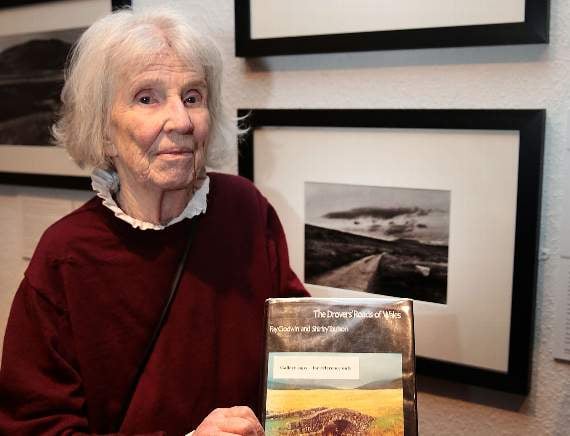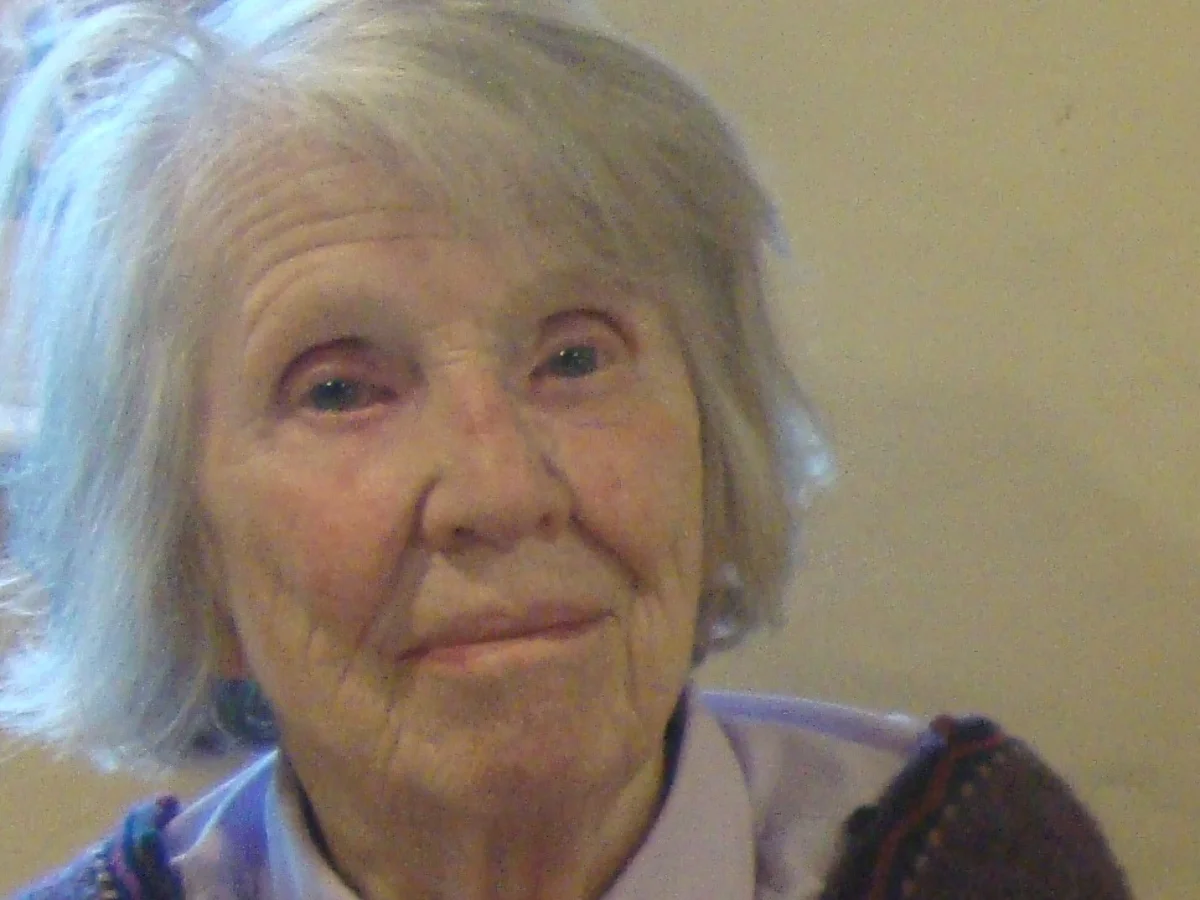Shirley Toulson Biography, Wikipedia, Family, Personal Life, Career, Net Worth, Death
Shirley Toulson (born Kathleen Shirley Toulson, May 20, 1924 – September 23, 2018) was an English poet, journalist, writer, and local politician whose work left a lasting impact on literature and cultural history. Renowned for her evocative poetry, insightful travelogues, and meticulous explorations of Britain’s ancient pathways, Toulson’s career spanned several decades and genres, including poetry, non-fiction, and children’s literature. Her ability to weave themes of time, memory, and human connection with vivid imagery and historical context made her a distinctive voice in English literature.
Profile
| Aspect | Details |
|---|---|
| Full Name | Kathleen Shirley Toulson (née Dixon) |
| Birth | 20 May 1924, Henley-on-Thames, Oxfordshire, England |
| Death | 23 September 2018 (aged 94) |
| Parents | Douglas Horsfall Dixon (naval commander and author) and Marjorie Brown |
| Education | Attended Prior’s Field School; studied English at Birkbeck, University of London |
| Military Service | Served in the Auxiliary Territorial Service during World War II |
| Marriages | Married Norman Toulson (1944–1951); married poet Alan Brownjohn (1960–1969) |
| Children | Three children: Janet Sayers, Ian Toulson, and Steven Brownjohn |
| Career | Poet, journalist, editor, and local politician; served as a Labour councillor in Wandsworth, London (1962) |
| Literary Affiliation | Member of “The Group,” an informal collective of poets in London during the mid-1950s to mid-1960s; contributed to their 1963 anthology A Group Anthology |
| Notable Works | Shadows in an Orchard (1960); Circumcision’s Not Such a Bad Thing After All (1970); The Fault, Dear Brutus: A Zodiac of Sonnets (1972); The Drovers’ Roads of Wales (1977); Celtic Journeys (1985); The Celtic Year (1996) |
| Themes | Explored themes of memory, loss, and nature; focused on Britain’s ancient pathways and Celtic Christianity in her prose works |
| Legacy | Recognized for her contributions to poetry and for documenting Britain’s ancient tracks and traditions; her works continue to be studied for their cultural and historical insights |
Early Life and Family
Shirley Toulson was born in Henley-on-Thames, Oxfordshire, England, to Douglas Horsfall Dixon and Marjorie Brown. Her father, a Royal Navy officer with a passion for education and culture, and her mother, described as the “poet’s mother,” fostered an environment rich in intellectual curiosity and literary appreciation. Marjorie’s Jewish family background, rooted in trading garden implements, added a colorful dimension to Shirley’s upbringing. Growing up in the serene Oxfordshire countryside, Toulson developed a deep affinity for nature, which later permeated her poetic imagery and travel writing.
Toulson attended Prior’s Field School in Godalming, Surrey, where her literary interests blossomed. Her academic journey was interrupted by World War II, during which she joined the Auxiliary Territorial Service (ATS), serving at anti-aircraft sites. This period marked a significant personal milestone: in 1944, she married Norman Toulson, an army lieutenant. The couple had two children, Janet and Ian, but their marriage ended in divorce in 1951. In 1960, Toulson married poet Alan Brownjohn, with whom she had a son, Steven. This marriage, also dissolved in 1969, was marked by shared literary pursuits and political engagement, as both served as Labour councillors in Wandsworth from 1962 to 1965.

Shirley Toulson Personal Life
Toulson’s personal life was dynamic and intertwined with her creative output. Her experiences as a mother and wife informed her writing, particularly in poems like “A Photograph,” a poignant tribute to her mother that captures the fleeting nature of time and memory. Her relationships with Norman Toulson and Alan Brownjohn, both significant figures in her life, shaped her formative years and literary career. Despite the challenges of balancing familial responsibilities with her professional ambitions, Toulson remained dedicated to her craft. Her love for walking, a lifelong passion, not only inspired her books on Britain’s ancient tracks but also reflected her resilience and stamina, qualities evident even in her later years when she climbed a North Sea oil rig for research.
Shirley Toulson Career
Toulson’s career was multifaceted, encompassing poetry, journalism, education, and politics. After her wartime service, she pursued higher education at Birkbeck College, University of London, studying English literature under distinguished academics like Geoffrey Tillotson and Barbara Hardy. This period solidified her foundation as a writer. Early in her career, she worked at Foyles bookshop and as a freelance journalist, contributing to the Times Educational Supplement and later serving as features editor for The Teacher and editor of Child Education.
Her poetic career took off in the 1950s when she joined The Group, a collective of poets including Alan Brownjohn and Fay Godwin. Her first poetry collection, Shadows in an Orchard (1960), was published by Scorpion Press, followed by works like Circumcision’s Not Such a Bad Thing After All (1970) and The Fault, Dear Brutus: A Zodiac of Sonnets (1972). Her poetry, characterized by simplicity, vivid imagery, and a reflective tone, often explored themes of loss, memory, and human relationships. “A Photograph,” one of her most studied works, exemplifies her ability to evoke universal emotions through personal narratives.
Toulson’s interest in social history and Britain’s ancient pathways led to a series of acclaimed non-fiction works. Her landmark book, The Drovers’ Roads of Wales (1977), combined meticulous research with vivid storytelling, tracing the routes used by farmers to move livestock. Other notable titles include The Celtic Alternative (1987), The Celtic Year (1993), Celtic Journeys (1985), and East Anglia: Walking the Ley Lines and Ancient Tracks (1979). These works, often illustrated by collaborators like Oliver Caldecott and Fay Godwin, showcased her passion for preserving cultural narratives. Toulson also wrote children’s literature, such as The Remind-Me Hat and Other Stories (1973), and contributed to educational publications like Education in Britain (1974).
In addition to her writing, Toulson was a teacher in both state and private schools and served as a commissioning editor for Keepsake Press after the death of its founder, Roy Lewis. Her brief foray into politics as a Labour councillor in Wandsworth highlighted her commitment to community engagement.
Shirley Toulson Net Worth
Shirley Toulson’s net worth is not publicly documented, and estimates vary. Some sources speculate a family net worth of approximately $3 million USD, but this figure lacks verification. As a successful writer, journalist, and editor, Toulson likely earned a comfortable income from her books, journalism, and teaching. Her works, published by reputable presses like Century Hutchinson and Scorpion Press, contributed to her financial stability, though she was not known for pursuing wealth over artistic integrity.

Death and Legacy
Shirley Toulson passed away on September 23, 2018, at the age of 94. Her death marked the end of a prolific career, but her legacy endures through her poetry, non-fiction, and contributions to cultural history. Works like “A Photograph” remain staples in academic curricula, admired for their emotional depth and universal themes. Her books on Britain’s ancient tracks continue to inspire walkers and historians, preserving the stories of forgotten pathways. Toulson’s ability to blend personal introspection with broader social and historical commentary ensures her place as a timeless figure in English literature.
READ ALSO: Sarvepalli Radhakrishnan Biography, Wikipedia, Family, Wife, Career, Net Worth, Death
FAQs
Who was Shirley Toulson?
Shirley Toulson was an English poet, journalist, writer, and local politician known for her poetry, such as “A Photograph,” and non-fiction works like The Drovers’ Roads of Wales, which explored Britain’s ancient pathways and cultural history.
What are some of Shirley Toulson’s notable works?
Her notable works include Shadows in an Orchard (1960), Circumcision’s Not Such a Bad Thing After All (1970), The Drovers’ Roads of Wales (1977), The Celtic Alternative (1987), and The Celtic Year (1993).
What themes did Shirley Toulson explore in her writing?
Toulson’s writing often explored themes of time, memory, loss, human relationships, nature, and the British countryside, with a reflective tone and vivid imagery.
When and how did Shirley Toulson die?
Shirley Toulson passed away on September 23, 2018, at the age of 94. The cause of death was not widely publicized.
Was Shirley Toulson married?
Yes, she was married twice: first to Norman Toulson (1944–1951), with whom she had two children, Janet and Ian, and second to poet Alan Brownjohn (1960–1969), with whom she had a son, Steven.
What was Shirley Toulson’s net worth?
Her net worth is not publicly confirmed, but speculative estimates suggest a family net worth of around $3 million USD, though this lacks verification.



